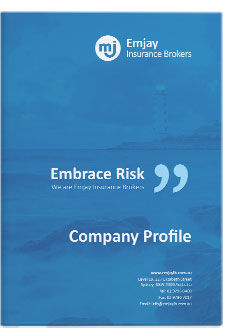Q1 2024: Insurance Market Trends
- Cyber threats remain a major concern in the risk profile of Australian businesses. Interestingly, Report-Cyber, the Federal Government’s online cybercrime reporting service, received close to 94,000 reports in FY2023 (equating to a report every 6 minutes). However, there continues to be a significant underinsurance for cyber risk, with the Insurance Council Of Australia reporting that currently only about 20% of SMEs and 35-70% of larger businesses have standalone cyber insurance. In light of these trends, insurers are now focusing on the prioritization and implementation of controls to thwart cyber-attacks and becoming increasingly selective on the insureds they elect to cover. Key risk mitigation measures such as a robust patch management process, endpoint detection and response protocol, and Multi-Factor Authentication have largely become pre-requisites to cover, rather than simply recommendations. This has come as a result of numerous cyber-attacks bypassing traditional controls, as attackers exploit both basic and advanced methods to compromise systems and sensitive information, resulting in significant business disruptions and reputational harm. We are imploring our clients to consider what the Australian Cyber Security Centre (ACSC) has defined as the Essential 8 – a recommended baseline of protection to make it harder for adversaries to compromise your systems. Read more on the Essential 8 from the ACSC here: Strategies to Mitigate Cyber Security Incidents.
- Inflationary pressures and the wider economic climate is continuing to impact insurance premiums this quarter. Whilst costs are starting to moderate in certain sectors – the outlook for the interest rate and inflationary environment in 2024 remains uncertain. In the US, the worlds most influential financial institution, The Federal Reserve has achieved some success in managing inflation. After hitting a recent high point of 9.1% year over year in June 2022, the BLS’ Consumer Price Index (CPI) — often referred to as “headline inflation” — has steadily slowed, falling to as low as 3.0% in June 2023. In February, prices increased 3.2% year over year, up slightly from 3.1% in January (see US CPI Data). Closer to home, the RBA Monthly CPI indicator for December 2023 was 4.1% down from its peak of 7.8% in December 2022 (RBA CPI Data) However, this is of course still above the target range of 2-3% headline inflation and as such there is no immediate interest rate relief expected in this financial year. Depending on the policy class, we are seeing inflationary pressures present to our industry in different ways. For example the property market is largely impacted by higher reinstatement costs on remediation works (supply chain pressures, labour market shortages and increased overall costs to construction), where as rates in the Liability sector rates are impacted by the growing social inflationary pressures – a term used to describe how litigation costs have increased with higher monetary settlements being sought by potentially insured plaintiffs, as well as a shift in social and cultural attitudes about who is responsible for absorbing risk, a key contractual concern for many of our clients (see here – NAIC – Social Inflation.)
- Reinsurance costs are expected to continue to increase according to recent predictions from Fitch Ratings, as underwriting profitability persists in posing problems to capacity/capital allocations and the general reinsurance market. The commercial insurance industry in the US reported a net underwriting loss of $21.2 billion in 2023, according to AM Best (see: US P&C Performance), a slight improvement from the $24.9 billion loss recorded in 2022. Whilst Australian domiciled risks have returned more favourable results i.e. in the year to 30 June 2023, Underwriting Profitability for general insurers locally was $5.70 billion, still down compared to the underwriting result of $6.08 billion in the previous 12 months (KPMG Insurance Dashboard). These results are largely driven by property losses and natural catastrophes but also the aforementioned inflationary pressures felt across the industry. In 2023, insured natural catastrophe claims remained well above the 10-year average of USD100 billion, despite the absence of a large-scale US hurricane event. Fitch does, however, forecast an improvement in underlying profitability for the global reinsurance sector in 2024 on continued strong underwriting margins and rising investment income (largely a factor of higher interest rates – which traditionally insurance premiums share an inverse relationship with), and we hope this will start to mediate premium increases for our clients in the longer term. Nonetheless we at Emjay are forecasting rates to be pushed upwards again for the next quarter and into FY25, particularly in the high-hazard/natural catastrophe exposed Property related risks, where we are seeing premium increases up anywhere between 30-60%. Also clients with high-hazard people risks such as those in the broader construction, mining and engineering industries which may be slightly more exposed to the social inflationary pressures alluded to earlier. In this market segment in particular (subject to individual loss history) Liability risks are increasing between 10-30%.
We hope this review has served as an insightful resource for our network as we encourage you to stay informed to adapt effectively to the evolving challenges and opportunities impacting the insurance sector. As always, our team is more than happy to answer any questions on these topics and/or explore any further factors you may be interested in understanding beyond the themes addressed above.
You can subscribe to this update on our website, and also stay in touch with our Embrace Risk Blog – as we will be continuing to share more regular content with you there over the coming weeks and months. |





